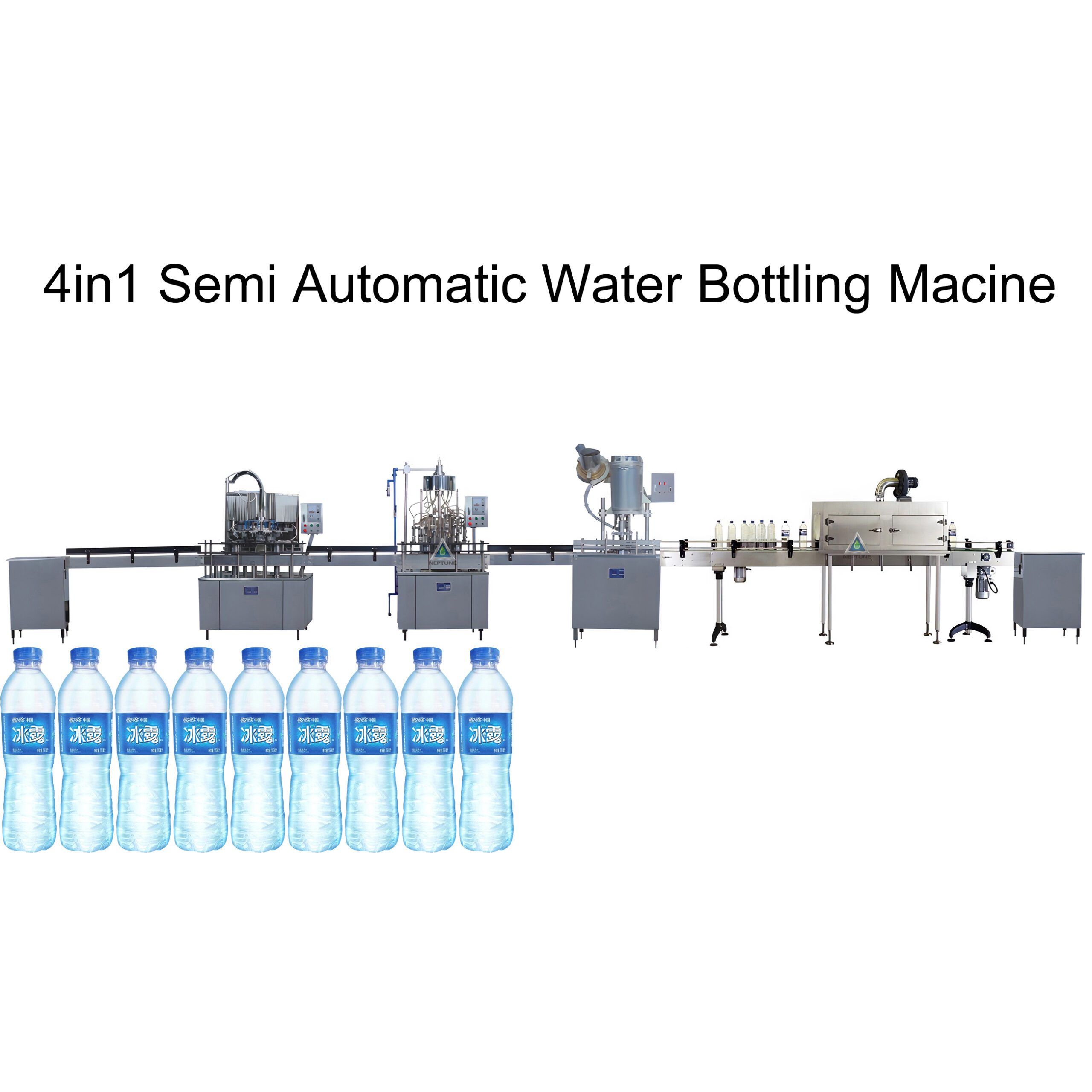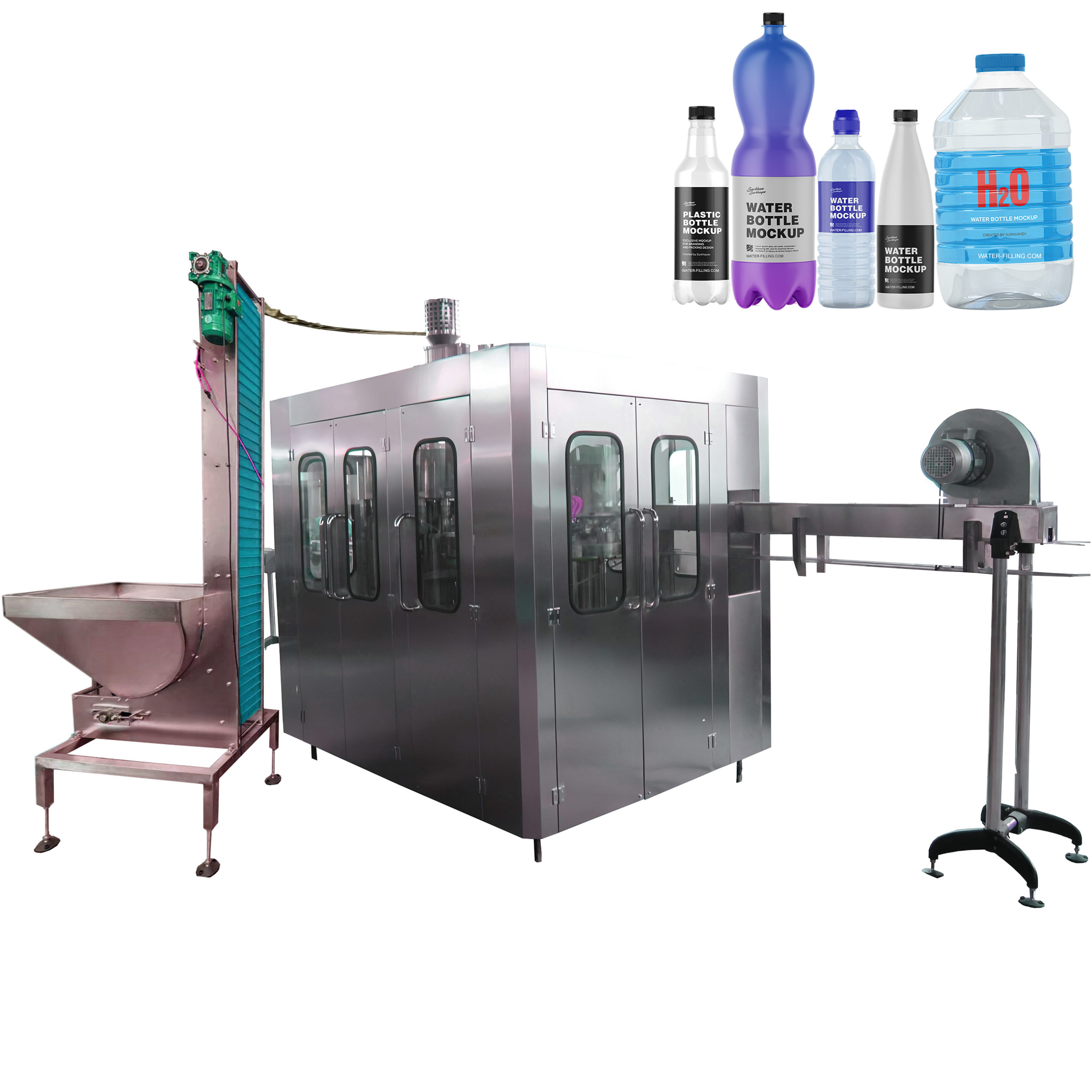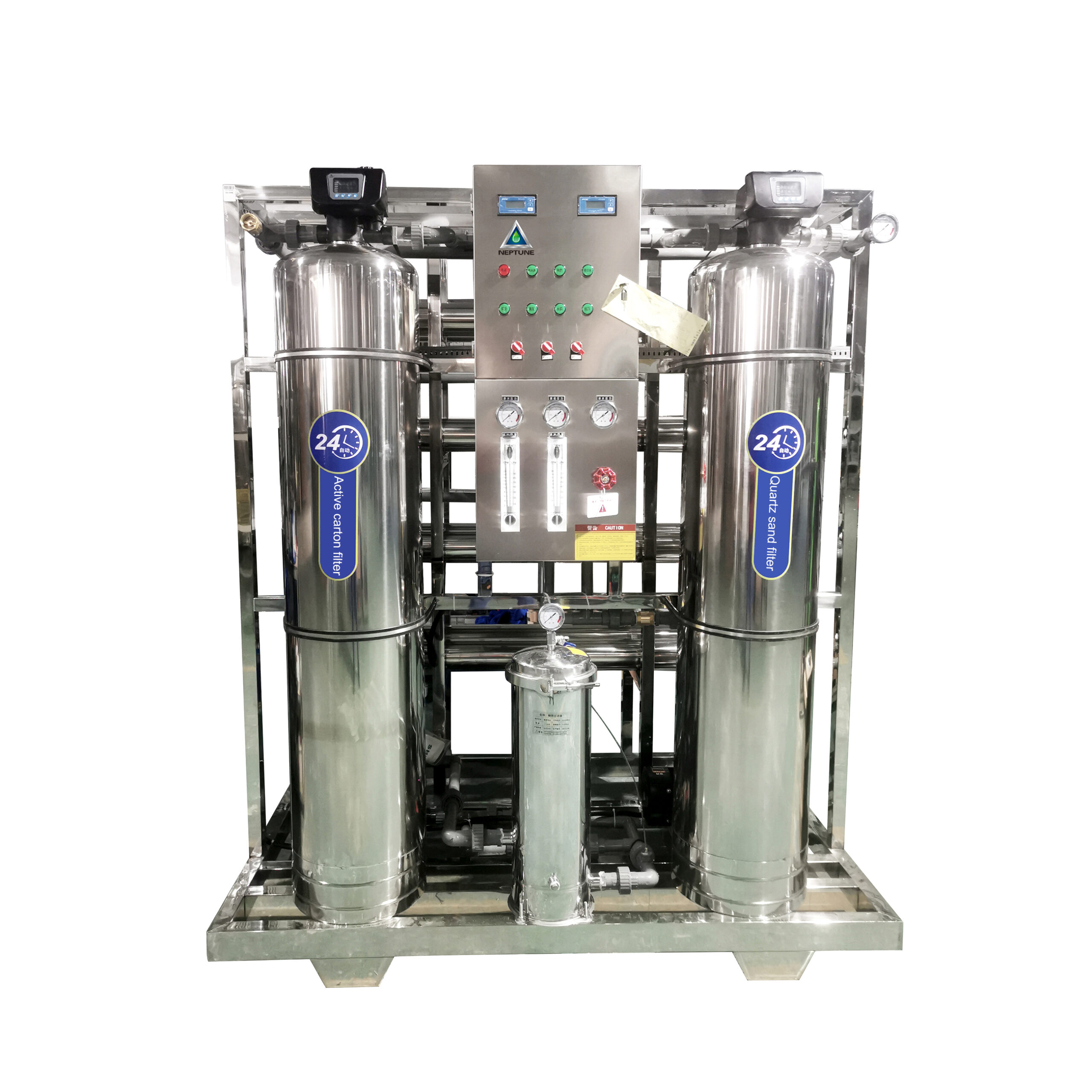
FOB PRICE $5300
What this Industrial Ro Plant price included?
- Filter tank stainless steel
- Pipe stainless steel
- RO membrane (8psc 4040)
- 4000LPH Quartz sand filter
- 4000LPH Active carbon filter
- 4000LPH Precision filter
- 4TON Water pump
2000LPH Industrial RO Plant is used to purify water by removing impurities and contaminants. It typically consists of several stages of filtration and treatment, including sediment filtration, activated carbon filtration, reverse osmosis (RO) filtration, and a water softener.
The sediment filtration stage removes larger particles, such as dirt, sand, and rust, from the water. The activated carbon filtration stage removes smaller particles, such as chlorine, organic compounds, and odors, through a process called adsorption. The RO filtration stage removes even smaller particles, including viruses and bacteria, by forcing the water through a semi-permeable membrane under high pressure.
The water softener is an optional stage that is used to remove excess minerals, such as calcium and magnesium, which can cause water hardness. Water hardness is a common problem in many areas and can lead to issues such as scale build-up in pipes and appliances, and the formation of soap scum. A water softener works by exchanging the calcium and magnesium ions in the water with sodium ions, which are less likely to cause problems.
Overall, a 2000LPH RO water treatment machine with a water softener is a effective way to produce high-quality, purified water for a variety of applications, including drinking, cooking, and industrial use.
| Capacity purified water | 2000 Liter per hour |
| Cost raw water | 2600 Liter per hour |
| Waste water | 600 Liter per hour |
Related Package Machine
Technique Process 2000LPH Industrial RO Plant
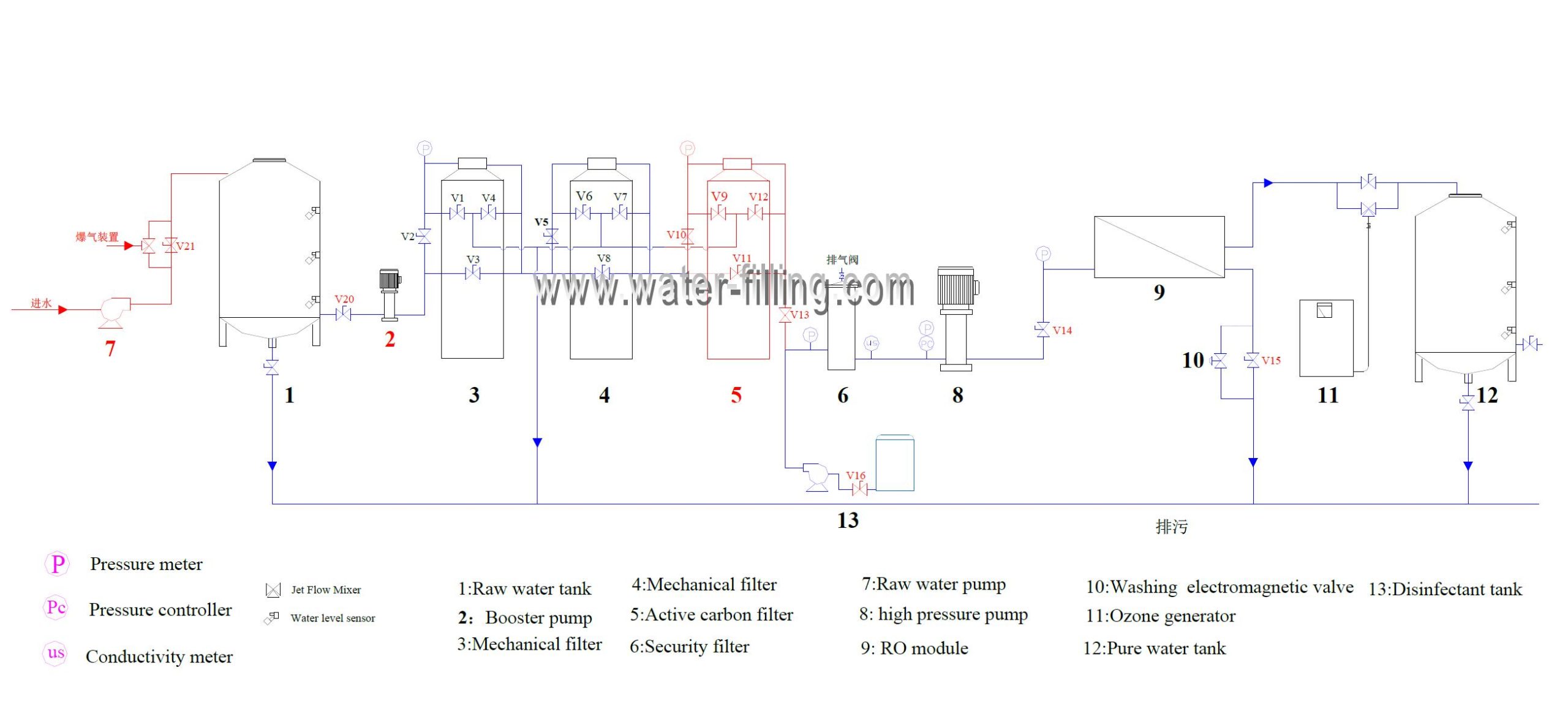
The process of a 2000LPH RO water treatment machine with a water softener typically involves the following steps:
1.Quartz Sand Filter
quartz sand filter is a type of filter that is commonly used in reverse osmosis (RO) systems to remove impurities from water. It works by passing the water through a bed of quartz sand, which acts as a physical barrier to remove suspended solids and other contaminants.
The quartz sand used in a quartz sand filter is typically highly porous and has a large surface area, which makes it effective at trapping and removing impurities. It is also relatively inexpensive and easy to maintain, making it a popular choice for use in RO systems.
Quartz sand filters are typically used as a pre-treatment step in an RO system, before the water is passed through the RO membrane. They are effective at removing larger particles, such as dirt, sand, and rust, which can damage the RO membrane and reduce the efficiency of the system.
Overall, a quartz sand filter is an effective and affordable way to improve the quality of the water in an RO system and help protect the RO membrane from damage.
2.Activated Carbon Filter
Activated carbon filter is a type of filter that is commonly used in reverse osmosis (RO) systems to remove impurities from water. It works by passing the water through a bed of activated carbon, which is a porous material that is highly effective at removing a wide range of contaminants through a process called adsorption.
Activated carbon is produced by treating a carbon-based material, such as coconut shell or wood, with high temperatures and an activating agent, such as steam or carbon dioxide. This process creates a highly porous material with a large surface area, which makes it effective at adsorbing impurities from the water as it passes through the filter.
Activated carbon filters are effective at removing a wide range of impurities, including chlorine, organic compounds, odors, and many other contaminants. They are typically used as a pre-treatment step in an RO system, before the water is passed through the RO membrane.
Overall, an activated carbon filter is an effective and affordable way to improve the quality of the water in an RO system and remove a wide range of impurities.
3. Precision Filters, 3th Prepare Filter For RO Device
Prevent the particles entering the membrane, scratched the surface of the membrane. In the normal operating condition, the filter can maintained for 3 mouth. The filter structure for fast replace.
Manufacture of high quality PVC material. Filter holder containing a fixed The 5μm PP filter is most commonly used for dealing the pure water. It is generally believed that the harmful particles and bacteria are larger than 0.22μm.
In order to prolong the life of RO membrane, the whole system adopts one set of stainless pp filter. The polypropylene microporous filter cartridges with the length of 40 inch in 5μm filters respectively. The 5μm filter acts as the protector of the RO membrane, filtering the vast majority of particles in the water, which eases the load of RO membrane and prolong its life.
The filter cartridges are for one-time use, as the particles retained in the gap of microporous filtering film is hardly removed by rinsing with acid-base. After a period of time, the filter cartridge needs to be replaced. The structure of them makes replacement of cartridge convenient. This apparatus contain filtration cartridges and stainless support layers. The support layer is made of stainless steel 304, with the advantages of compact structure, beautiful shape, high flux, good filtration accuracy and etc.
4.RO system
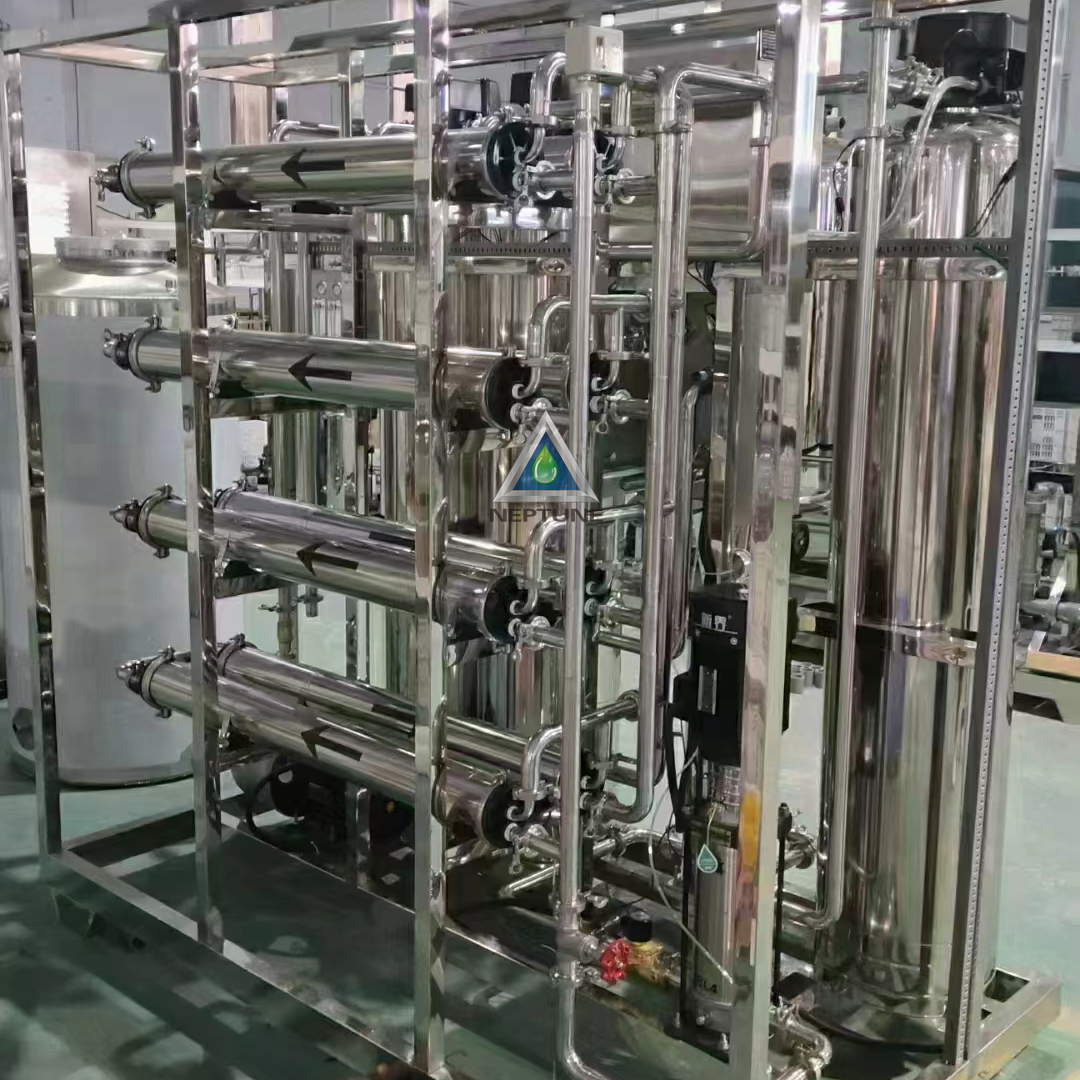
RO membranes auto wash and manual wash
RO membranes manual wash with medicine
Pure water high water level auto stop, low water level auto start
Multi-phases pump protected without water
Protected when no power, poor power, over electrical current, short circuit, circuit breaker, leakage protection.

The RO device removes the hydronium, organic substance, colloid, bacteria and other impurity by the method of membrane. And the water can be desalted and purified. The theory is as follows. The treated water and the untreated water are separated by the membrane; the treated water osmoses to the untreated water. There is osmotic pressure between the two. If the pressure is added to the untreated water and the pressure of the untreated water is bigger than the osmotic pressure, the water of the untreated water osmoses to the opposite position of the water. This applies the reverse osmosis to the desalted water. That is to say the untreated water is purified into the pure water through the RO membrane under adequate pressure. The left water which can not osmosis through the membrane contains a lot of solute and suspended substance, and it will be drained out as waste water.
The water must be pretreated before entering into the RO system, or it will bring damage to the RO membrane.
The RO system not only can be used for desalination, but also for filtering the organic substance and bacteria.
The production of water is monitored by the liquid crystal display conductivity meter.
The RO system needs be cleaned timely, including the stainless steel pump, filter, disinfectant tank, valve and other components.
Commonly, the RO system should work once every day. If it does not work in one week, it must be protected by some measures, or the service life of the membrane will be serious affected.
RO device employs low pressure large flux membrane made by American Company. The type is American 4040 RO Memebrane, and it has four of them. The membranes can serve for years in good maintenance. This instruction explains the details of operation and maintenance methods. The RO device removes the hydronium, organic substance, colloid, bacteria and other impurity by the method of membrane. And the water can be desalted and purified. The theory is as follows. The water and the solution are separated by the membrane; the water osmoses to the solution. There is osmotic pressure between the two. If the pressure is added to the solution and the pressure of it is bigger than the osmotic pressure, the water of the solution osmoses to the opposite position of the water. This applies the reverse osmosis to the desalted water. That is to say the raw water is purified into the pure water through the RO membrane under adequate pressure. The left water which can not osmosis through the membrane contains a lot of solute and suspended substance, and it will be drained out as waste water. This principle makes RO device.


